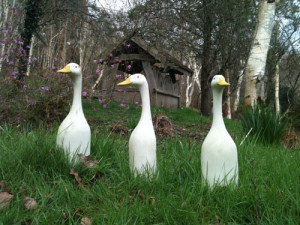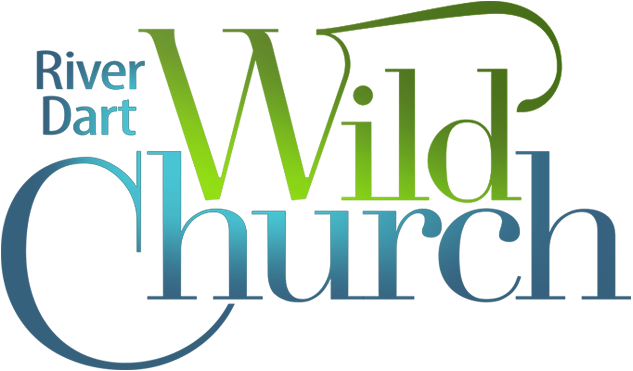River Dart Wild Church – Core principles and practices
After seven years of drawing upon and teaching these practices within River Dart Wild Church (and even longer within the other Wild Spirit groups), it seems time to articulate them in writing and share some written sources for those who wish to explore further…
Peregrinatio – ‘wandering and wondering’

In my teens, like many of my peers, I became very disillusioned with ‘church’. The Christian contexts available to me then ranged from ‘high church’ sung services, which I found beautiful but hierarchical and sexist, to more evangelical and charismatic occasions full of fervour and worship songs, where I was suspicious of seemingly exclusive, unthoughtful theology and emotionally highly-charged group identity. The times when I felt most free and alive were when I was spending time outside with friends or alone. I was reading the Christian mystics but where were the contemporary contemplatives and teaching on their practices?
So when a friend gave me the Buddhist book Zen Mind, Beginniner’s Mind it felt like a homecoming. Its author, the Japanese Zen Master Shunryu Suzuki (1905-1971), writes about returning to our capacity to live with an open heart and a ‘beginner’s mind’, which can continually meet the ever changing and challenging mystery of life in fresh and new ways. This, and the way of meditation he taught, affirmed for me the way I felt somehow naturally drawn to live, in learning, travelling, raising a family…
It took some years to return to Christianity (through Druidry and Jewish Mysticism) and realise that, for me, this had also been a Christian Way all along. Another turning point, when I was in my thirties, came when reading about Celtic spirituality. Here I encountered a similar sense of trust and creativity, of being open to the ever emerging gift of life in a way that I would come to call ‘wandering and wondering’. So the seeds of what would one day become River Dart Wild Church, slowly put down roots into a core spiritual practice of my everyday life. Again I was struck by a sense of recognition when I read of this ‘peregrinatio’:
‘The word itself is almost untranslatable but its essence is caught in the ninth-century story of three Irishmen drfiting over the sea from Ireland for seven days, in coracles without oars, coming ashore in Cornwall and then being brought to the court of King Alfred. When he asked them where they had come from and where they were going they answered that they ‘stole away because we wanted for the love of God to be on pilgrimage, we cared not where’. This wonderful response and this amazing undertaking comes out of the inspirational character of early Irish spirituality. It shows at once how misleading is that word ‘pilgrimage’ and how very different indeed is the Celtic peregrinatio from the pilgrimages of the Middle Ages or the present day. There is no specific end or goal such as that of reaching a shrine or a holy place which allows the pilgrim at the end of the journey to return home with a sense of accomplishment. Peregrinatio is not undertaken at the suggestion of some monastic abbot or superior but because of an inner prompting in those who set out, a passionate conviction that they must undertake what was essentially an inner journey. Ready to go wherever the Spirit might take them, seeing themselves as hospites mundi ‘guests of the world’.’
De Waal, E. (1996) The Celtic Way of Prayer, p. 9
In practice, guiding a group of pilgrims in this age of risk assessments may not leave a lot of space for completely spontaneous wandering! But even a route with a known destination can contain pause points for personal wanderings and can be undertaken in a spirit of wonder and this can be, not just a way to spend an afternoon, but a way of life.
Quadriga – Fourfold Sense of Scripture – ‘a fourfold wisdom way’
When I guide a Wild Church pilgrimage, often the opening invitation is in the spirit of peregrinatio. Usually my sister and fellow pilgrims don’t know what route I or a colleague will lead them on and, for many, travelling together in silence and trust is very freeing and gives time to open the senses, heart and mind to what may be met along the Way.
Yet most of us don’t easily relinquish control and find we can be carrying our busy, planning selves along with us. Every spiritual tradition has practices to help calm our often over active minds and enable us to be more whole or holistic in how we meet the gift of life. My entry point to the second core practice that River Dart Wild Church draws upon came to meet me initially through Jewish mysticism or Kabbalah. It was through Kabbalah, in my twenties, that I first learned of ‘the Four Worlds’ and what I call a ‘fourfold wisdom way’. This is one that pays attention to our embodied, contextual experience (the fourth world), to our psychological make-up and web of relationships (the third world), to subtler, more intuitive or ‘spiritual’ perceptions (the second world) and to the mysterious source at the heart of it all (the first world). I met this as both a way of living with a wider awareness and also a way of reading the Bible. In approaching the Hebrew Bible I was taught to open to these different senses, as if walking through four different gates into the ‘paradise garden’ of scripture (this method is known by the acronym PaRDeS – see the references below for more details). Once again, I was rather slow to realise that Christianity also had a ‘fourfold sense of scripture’ (sometimes called the Quadriga) that could be similarly applied to ‘reading’ life in a way that encourages embracing and extending beyond taking things literally – in both the ‘small book’ of scripture and the ‘big book’ of nature.
(See: Kurzweil, A. (2007) Kabbalah for Dummies. Indiana: Wiley – Chapters 6 and 14. Also Cooper, D. (1997) God is a Verb: Kabbalah and the practice of Mystical Judaism. New York: Riverhead Books and Scholem, G. (1978) Kabbalah. New York: Meridian – especially Chapter 3)
On a historical note and hugely summarised: the Quadriga began perhaps with the allegorical method of Jewish philosopher and mystic, Philo (c. 20 BCE – 50 CE) who inspired Clement of Alexandria (c. 150-215), who was born and raised a Greek pagan and later converted to Christianity and became a priest. He inspired the Christian scholar and teacher, Origen (c. 186-251) who articulated a three fold map of spiritual life: ethike or ethics, physike or ‘physics’ (contemplation of nature) and enoptike or contemplative union with the divine.
Origen’s threefold wisdom way is widely seen as the ancestor of the Quadriga fourfold method, that became standard in the Middle Ages in both Jewish and Christian contexts, moving into the Latin West from the mystics and teachers of the Eastern desert traditions, particularly through John Cassian (360-435 CE).
(See: Schneiders, S. M. (2000) ‘Scripture and Spirituality’ in McGinn, B. Meyendorff, J. and Leclercq, J. (ed) Christian Spirituality. Origins to the Twelfth Century. New York: Crossroad Publishing. Ware, K. (2011) ‘Clement of Alexandria’ and ‘Origen’ in Nataraja, K. (ed) Journey to the Heart: Christian Contemplation Through the Centuries. London: Canterbury Press.)
Although the Quadriga deserves a fuller description, which I will return to in future, for now here’s The Four Senses in a nutshell:
– a literal sense
– an allegorical sense (the literal extended as metaphor or symbol)
– a tropological or moral sense (related to a wider wisdom tradition & drawing out ethical guidance)
– an anagogical (‘leading upward’) or mystical sense

I think Quadriga informs a number of practical methods for reading scripture and prayer that can also be applied to other aspects of life, such as ‘reading’ the ‘big book’ of nature, these include Lectio Divina – divine or sacred reading.
Lectio Divina in a nutshell:
(nb; stages don’t necessarily unfold in a linear fashion…)
Stage One – Lectio – listening – pay attention, be present, be embodied, open the senses, be relational
Stage Two – Meditatio – musing to seek meaning & metaphor – draw on your wisdom traditions, use your mind and imagination to reflect deeply
Stage Three – Oratio – opening the heart and feeling
Stage Four – Contemplatio – contemplating – let go of sensing, reflecting and feeling and resting in the present/divine/sacred presence
(See McGrath, A. E. (1999) Christian Spirituality. Oxford: Blackwell Publishing. Teasdale, W. (1999) The Mystic Heart. California: New World Library. Funk, M. M. (2010) Lectio Matters. London & New York: Continuum Books)
In practice opening the four senses or exploring the four stages of lectio divina can be quite structured and guided or much more emergent and intuitive (returning to the different types of pilgrimage). Like any practice, the more you give to it and the more it is sustained, the more that is received. This is but the barest outline (within the boundaries of two sides of A4) yet I hope it offers food for thought and goes a little way towards acknowledging with gratitude the deep streams of wisdom and experience that flow from sacred traditions, which River Dart Wild Church draws upon.
The third and final core principle and practice inspiring River Dart Wild Church is that of sacramentality and Holy Communion… but as the wonderful Jewish storyteller Shonaleigh Cumbers often says, ‘that’s another story, for another time…’
Text and photos by Sam Wernham

